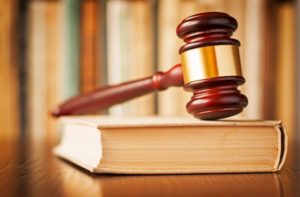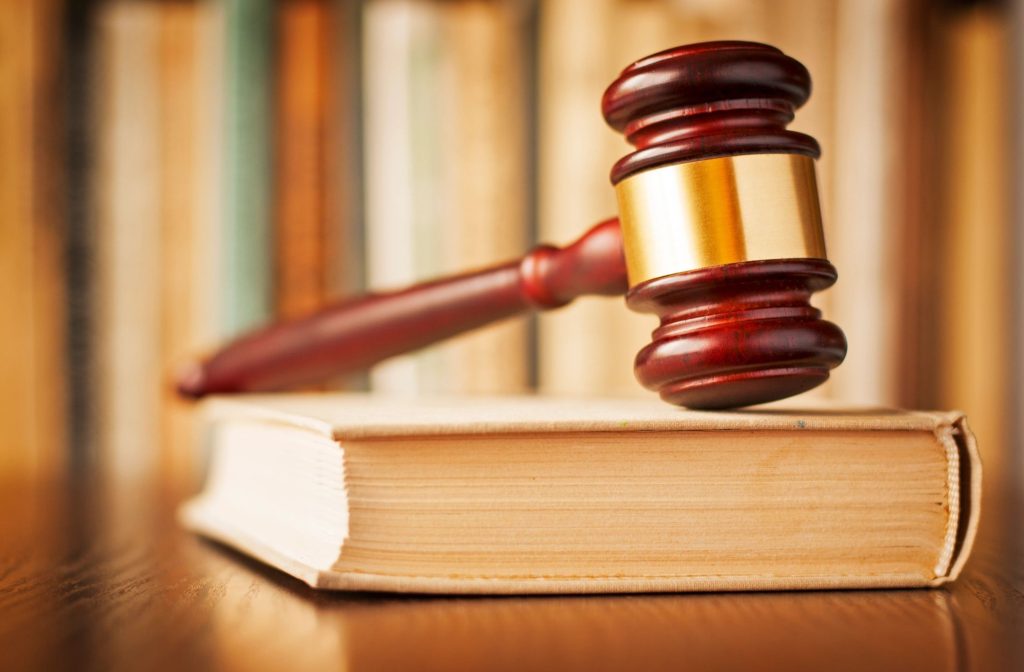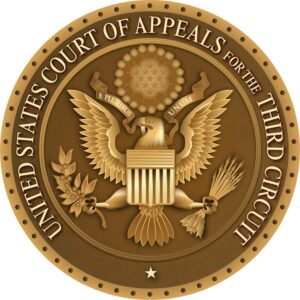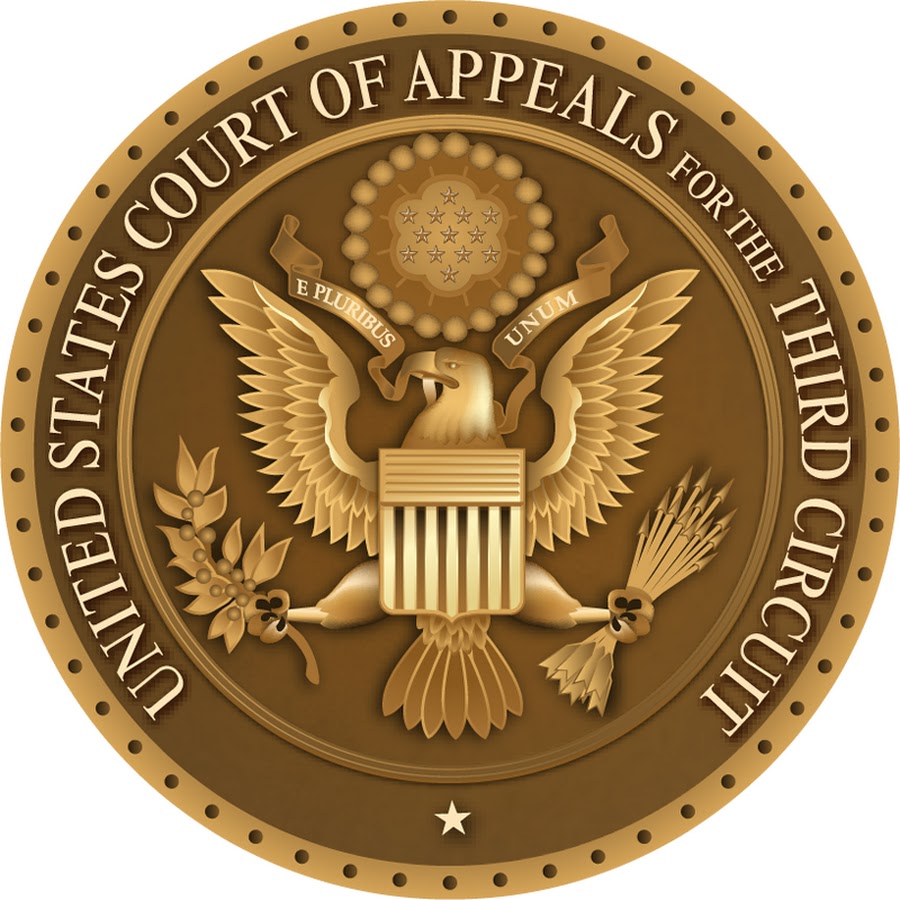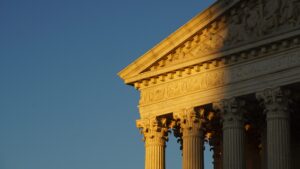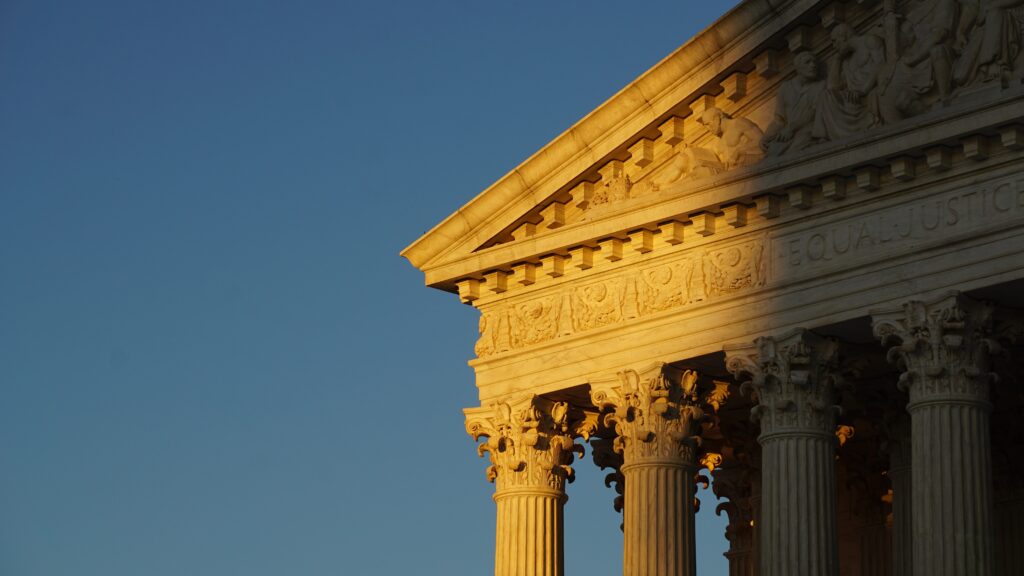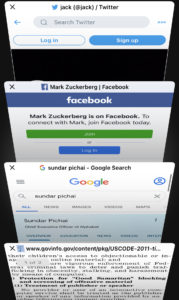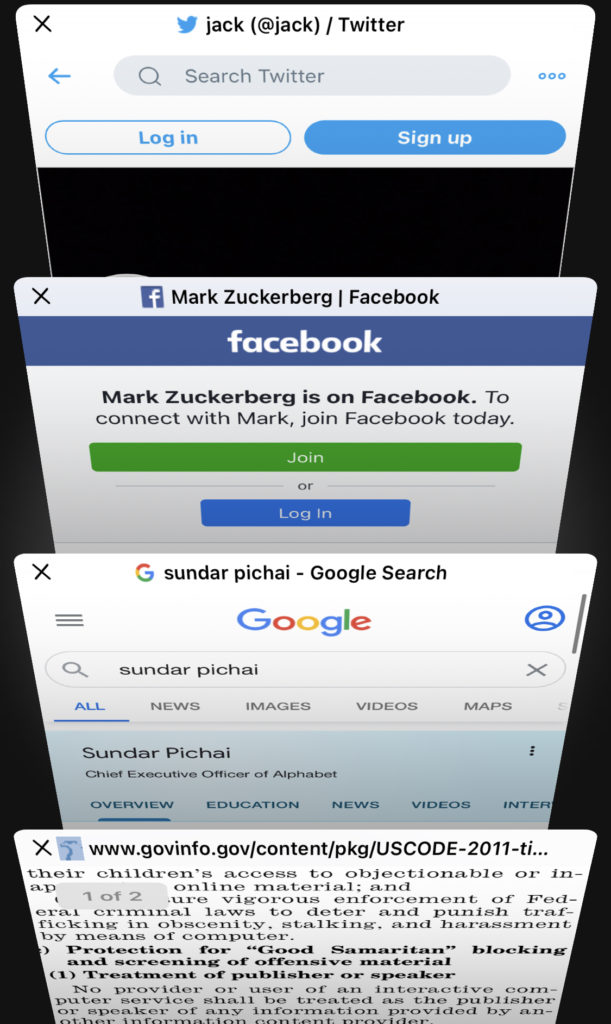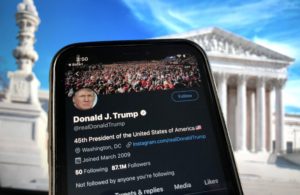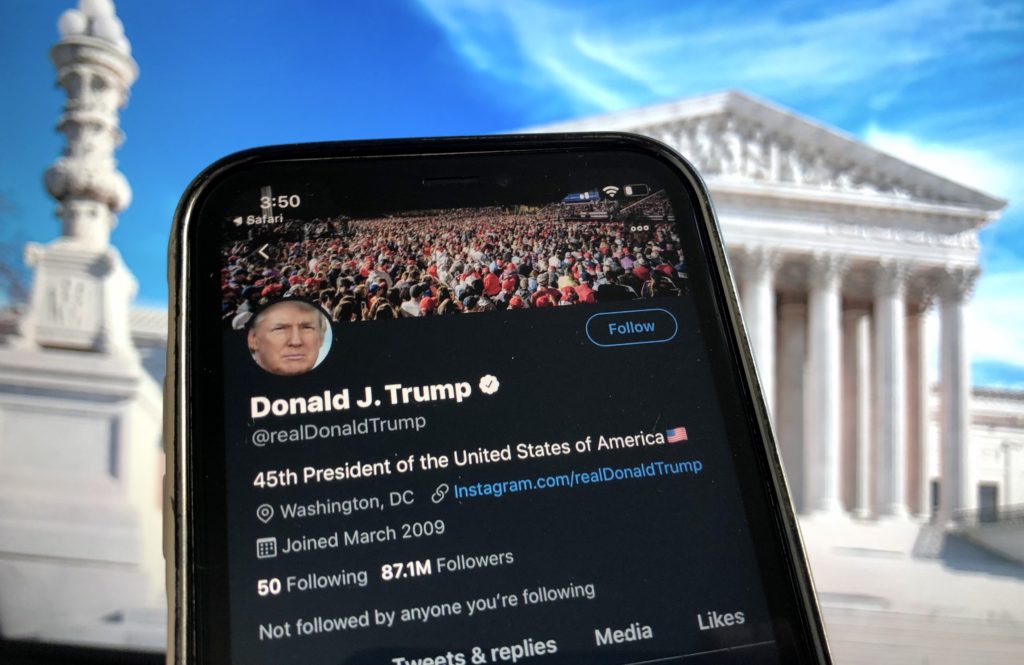12 Wake Forest L. Rev. Online 111
INTRODUCTION
No one wonders about the strength of the First Amendment’s speech protections with the same level of intensity as someone who has just uttered an unpopular opinion or statement. Growing up, school children often defend their words by alleging that in the United States, we can say whatever we want because of the First Amendment’s right to freedom of speech. Unsurprisingly, the extent of First Amendment protections is much more complicated than that simple phrase of “freedom of speech.” First Amendment jurisprudence “has been called labyrinthine for good reason. It consists of overlapping doctrines, maddeningly inconsistent rulings and an uncertain future.”
This Comment will examine the scope of the First Amendment for higher education, particularly for professors at public colleges and universities. Can professors insist on calling students pronouns contrary to the students’ stated preferred pronouns despite policies and high-ranking administrators requiring professor to comply? Should the answer to that question depend on the jurisdiction in which the professor is teaching?
In Meriwether v. Hartop, the Sixth Circuit joined the circuit split regarding which freedom of speech test applies to higher-level teacher speech for First Amendment purposes. The breadth of freedom of speech on campuses is a recurring issue and a highly litigated matter. Until there is a consistent test that courts can apply, and that professors can rely upon, the confusion surrounding professors’ protections and academic freedom will continue.
As discussed in Part III, the Supreme Court has determined that Garcetti vs. Ceballos is the controlling test in public employment settings. However, the Supreme Court refused to confirm which test would apply for higher education by merely referencing that Garcetti may not be the adequate test for professors. Since that opinion, there has been confusion and inconsistency among the appellate courts, as some interpreted Garcetti to apply to all employment sectors, including professors at colleges and universities, and some circuits interpreted Garcetti not to apply to professors and therefore apply a different standard instead.
While freedom of speech on campus is commonly analyzed, the focal point is typically on the students’ freedom of speech rights in the classroom or on campus property when engaging in speech such as protests. In contrast, this Comment looks at the extent of public university professors’ rights rather than the rights of students. Specifically, this Comment focuses on higher education, as opposed to teachers at or below secondary education. Given the United States’ tense and ever-changing sociopolitical climate over the last two years, the breadth of the First Amendment is once again at the forefront of people’s minds. Are our First Amendment rights in jeopardy? How far does this protection reach? How much protection is too much?
This Comment consists of six parts. Part I offers a brief overview of the First Amendment and its protections. Part II discusses the public policy of professors holding broad freedom of speech rights and the importance of academic freedom. In Part III, this Comment reviews the controlling cases that embody the freedom of speech tests in public employment. Next, Part IV reviews the inconsistencies in how different circuits are applying these cases to develop freedom of speech tests for higher education at colleges and universities. Further, Part V discusses why the gaps in Garcetti make Pickering the more appropriate standard for professors’ speech and why courts must adopt an academic freedom exception if they are going to apply Garcetti to all employment sectors. Finally, Part VI utilizes the Sixth Circuit’s application of the Garcetti test in its case Meriwether v. Hartop to demonstrate why the Pickering test is preferable and why the Supreme Court must step in to clarify the appropriate standard.
I. Background: First Amendment
The First Amendment not only guarantees freedom of speech, press, and religion, but also, it is a symbol of independence in the United States. When the United States achieved independence from England, the Bill of Rights deliberately included the freedom of speech as the “first constitutional guarantee” and was later “ratified as part of the Constitution” along with the rest of the Bill of Rights on December 15, 1791.
Freedom of speech has rich roots in the United States, and this constitutional provision has been “widely copied and admired” in other countries and served as a catalyst for “the subsequent progress towards freedom of speech” elsewhere. The freedom of speech was at the forefront of the founding fathers’ minds at the time of independence because there was no such guarantee in Britain and the founders were framing a democratic government for the United States. Under English law, which governed the United States prior to independence, there were exceptions to the freedom of speech, and there was no “positive guarantee of freedom of speech” except under the parliamentary privilege.
After Gitlow v. New York, a milestone case for American jurisprudence, the First Amendment’s protection extended to all fifty states through the incorporation doctrine of the Fourteenth Amendment, which “protects the citizen against the State itself and all of its creatures.” Not only is the First Amendment symbolic of the United States independence from Britain, but also, it is crucial to this country’s democratic form of government. Without the explicit guarantee of the freedom of speech, no other fundamental human right can be advocated for, no democratic system of government or constitutional system of government would function properly, and “no potential for exposure of wrongdoing, particularly in high places,” would be permitted.
Freedom of speech protects the political debate on which a democracy survives. Without the freedom of speech and resulting political debate, “there can be no check on potential tyrants and, so, no guarantee of constitutional government and no guarantee of maintenance of freedom of speech.” In a well-known Supreme Court First Amendment case, the Court stated that “if there is any fixed star in our constitutional constellation, it is that no official, high or petty, can prescribe what shall be orthodox in politics, nationalism, or other matters of opinion or force citizens to confess by word or act their faith therein.”
Aside from applying in all fifty states, the First Amendment has wide coverage in other senses as well. The First Amendment protects more than just verbal speech; it also protects symbolic speech, which is “nonverbal, nonwritten forms of communication.” Importantly, the First Amendment protects against content discrimination, which prohibits restrictions on people speaking on certain subject matter. While content discrimination is disfavored, viewpoint discrimination is disfavored even more because it restricts particular ideas and opinions within certain subject matter.
II. The Intersection of the Freedom of Speech and Academic Freedom–Public Policy Requires Significant Speech Protections for Professors
Since education and academia contribute significantly to public debate, a lack of academic freedom threatens citizens’ ability to debate controversial issues. Professors hold a unique role in society because they are responsible for encouraging introspection and disseminating information, ideas, and knowledge upon citizens so that the public can benefit from the wealth of knowledge and progress as a country. Notably,
teaching, scholarship and most, if not all, research, involves the comparatively wide dissemination of information, it is inextricably bound up with speech. Since the pursuit of truth itself involves discussion, any restriction on freedom of speech is a restriction on the pursuit of truth. Consequently, restriction of freedom of speech automatically involves a restriction of academic freedom, except where academics are given some special freedom of speech, not available to members of society in general.
Appropriately, teaching, scholarship, and research are identified as the core duties of professors, and these are the core duties that academic freedom seeks to protect. The unique role of professors, and the unique difficulties and situations professors face, require safeguards; this concept led to what is commonly referred to as “academic freedom.” Academic freedom is premised “on the idea that the free exchange of ideas on campus is essential to good education.” It has been defined as the “freedom of a teacher to discuss or investigate any controversial social, economic, or political problems without interference or penalty from officials, organized groups, etc.”
In 1915, the American Association of University Professors (AAUP) drafted the Declaration of Principles on Academic Freedom and Academic Tenure. In this Declaration, academic freedom was “divided into ‘freedom of inquiry and research; freedom of teaching within the university or college; and freedom of [extramural] utterance and action.’” A fourth principle was later added: freedom of intermural utterance and action, which entails the freedom to participate in and comment on how a school is administered. However, the AAUP “did not advocate for unlimited faculty rights.” Instead, “academic freedom was tied to professional duties and responsibilities.”
Because academia is “disproportionately concerned with new ideas and innovations, all of which inevitably challenge existing views,” education and academia are particularly and significantly “vulnerable to any lack of freedom of speech.” This vulnerability arises because pre-existing “entrenched interests” are threatened by, and therefore resist, “the challenge posed by new ideas.” In the United States, our public education system, “if faithful to the ideal of secular instruction and political neutrality, will not be partisan or enemy of any class, creed, party, or faction.”
The United States’ prohibition on content and viewpoint discrimination is essential to the academic setting because professors must be able to lecture on a variety of different viewpoints and ideologies, even if the viewpoints and opinions are not the most popular or if the majority of the students in the classroom do not agree. That is the essence of a debate and a democratic form of government. Freedom of speech and academic freedom are necessary to a “proper political debate.”
Beyond the importance of a proper political debate, the intersection of freedom of speech and professors’ academic freedom is important for a plethora of other developments, progressions, and civic functions. For example, until the seventeenth century, it was commonly taught in schools that the Sun revolved around the Earth. Without the freedom to challenge viewpoints and lecture on alternative theories and ideologies, societies would make little progress. This was shown to be true during the “anti-revolution movement of the 1920s” and the Scopes trial.
Professors’ speech protections must be closely guarded given the unique role that professors hold, which can only be properly performed if professors know that they are protected by the First Amendment. Removing professors’ freedom of speech rights runs the risk of professors switching occupations if they are subjected to lawsuits or employment termination each time they lecture to students or publish an academic article as encouraged by universities. Aside from the United States recognizing the inherent value of education, education leads to progress and development, which benefits society. However, this cannot come to fruition if professors are changing careers out of fear.
Without the freedom of speech, thoughts would be stagnant and cease to progress in many areas, including academically, scientifically, politically, and even socially. However, academic freedom is not absolute protection for professors. Following the thought process of the AAUP, professors must “act professionally in their scholarly research, their teaching, and their interactions with students and other faculty.” This is ensured by universities’ policies and procedures that “safeguard both students and the academic integrity of the institutions and disciplines.” Acting professionally has benefits for the reputation and integrity of the larger college or university, and it also contributes to the professor’s reliability, authority, and believability from the perspective of the student. This concept that academic freedom is not absolute will be addressed later when analyzing the facts of Meriwether.
III. Pickering, Connick, and Garcetti–The Focal Cases That Have Developed the Freedom of Speech Test
While the contours of the freedom of speech have been developed through a number of influential cases, this Comment will focus on three main cases that lay the foundation for the freedom of speech, especially in the public employment context. It is largely from these three cases that the different appellate circuit courts derive the test that they apply to professor speech in higher education.
In Pickering v. Board of Education, a high school teacher was fired for submitting a letter to a local newspaper that criticized the school. The Supreme Court found that the teacher’s freedom of speech rights were violated because “teachers and other public employees do not relinquish their First Amendment rights to comment as citizens on matters of public interests.” Thus, Pickering established a right to comment on matters of public interest, and it further created a balancing test between the teacher’s freedom of speech interests and the employer’s interest in regulating its employees. The Court reasoned that “teachers are, as a class, the members of a community most likely to have informed and definite opinions as to how funds allotted to the operations of schools should be spent.” While Pickering established the governing test, the opinion did not clearly specify what constituted a matter of public concern.
Fifteen years later, the Supreme Court elaborated on the test for whether speech was on a matter of public concern in Connick v. Myers. In Connick, an assistant district attorney was fired for distributing a questionnaire around the office regarding morale within the office. The Supreme Court established that when determining whether “an employee’s speech addresses a matter of public concern,” the courts must look at the “content, form, and context of a given statement.” In Connick, the content, form, and context were unrelated to “any matter of political, social, or other concern to the community.” The speech was on a matter of personal interest, not public interest, and was not protected by the First Amendment. Thus, Connick provided clarity to the freedom of speech test given in Pickering: courts must look at the content, form, and context for a concern to the community, and the interest must not be personal.
After Pickering and Connick, the prevailing First Amendment test was still the two-part Pickering test, which requires that (1) an employee speak about a matter of public concern, and (2) a balancing of the employee’s and employer’s interests. Connick supplemented the first requirement by adding that when determining whether a matter is of public concern, the court should look at the content, form, and context of the statement and whether it was related to any political, social, or other concern to the community. A personal interest would not suffice. While Pickering was bolstered by Connick and other First Amendment cases, this progressing foundation was rattled by the Garcetti opinion.
In Garcetti v. Ceballos, the Supreme Court added an additional, third step to the freedom of speech analysis in Pickering for employment contexts, namely that the public employee must be speaking outside of her official, professional duties for the speech to be protected. Official duties include those that the employee is “paid to perform.” When one speaks outside of one’s official duties, they are speaking as citizens and the speech is protected. This additional third step is where the circuits diverge for the freedom of speech test that is applied at the university level.
In Garcetti, a deputy district attorney wrote a memorandum to his supervisors regarding a legal issue. The Supreme Court held that this speech was not protected because Garcetti was acting within his duties as deputy district attorney and was not speaking as a citizen. By requiring this third prong for employees, “the Supreme Court suggested that First Amendment protections do not attach insofar as individuals are speaking as employees rather than as citizens.” Importantly, the Garcetti Court expressly reserved judgment as to whether the newly espoused third prong would apply in a public university setting. This was in response to Justice Souter’s dissenting opinion that the “official duties” rule would “imperil First Amendment protection of academic freedom in public colleges and universities, whose teachers necessarily speak and write ‘pursuant to . . . official duties.’” Justice Souter’s dissent recognized that “universities occupy a special niche in our constitutional tradition” given the importance of public education and the “expansive freedoms of speech and thought associated with the university environment.” Thus, the Court left the underlying question unanswered—does Garcetti apply to public universities? Is there an academic freedom exception? If Garcetti doesn’t apply, is Pickering the appropriate standard? Given this gray area, circuits have applied different First Amendment tests to university professors’ speech.
IV. Current Circuit Split—Inconsistent Freedom of Speech Test Applied to Professors Depending on the Jurisdiction
The Sixth Circuit has joined the circuit split surrounding the prevailing test for professor speech, which puts pressure on the Supreme Court to clarify the confusion and establish a consistent test across the United States for this Constitutional guarantee. The Fourteenth Amendment incorporates the First Amendment so that it applies to the states, and it should apply evenly to the states. The constitutional guarantees should not be more protective in one state than another state. The United States operates on the premise that “all men are created equal”; this should mean that citizens in New York are entitled to the same protections as the citizens in Texas, Maryland, or any other state. Since the First Amendment for professors has not yet achieved that level of consistency, this Comment will now turn to the different approaches that the circuits have adopted for professor speech at public universities and colleges.
In Weintraub v. Board of Education, the Second Circuit adopted the Garcetti test, which adds the third prong to Pickering and requires one to speak as a citizen outside of one’s official job duties to be protected by the First Amendment. Similarly, the Seventh Circuit in Renken v. Gregory hesitantly applied the Garcetti test and determined that a professor was acting within his “teaching, research and service responsibilities” when he “took issue” with the way the funds from a grant were to be allocated by the university.
Alternatively, the Ninth and Tenth Circuits have taken approaches similar to one another and have chosen Pickering as the appropriate standard for professors. In Demers v. Austin, the Ninth Circuit held that “Garcetti does not apply to ‘speech related to scholarship or teaching’” and rather Pickering is the test that applies. Similarly, the Tenth Circuit held that the appropriate standard is the test articulated in Pickering for when “a professor was claiming his academic freedom was violated.”
V. Why Pickering is the Superior Freedom of Speech Test Over Garcetti for Securing and Maintaining Academic Freedom
While speaking as a citizen and outside of an employee’s official duties may be an appropriate standard for other employment settings, it directly contradicts the values of the public education system. Teaching, scholarship, and research are official duties of a professor, which means that while exercising these functions, professors would not be speaking as citizens. These are the functions professors exercise that we want to protect as a society. The Garcetti third prong would heavily favor college and university administrations, while leaving professors to wonder about the extent of their speech rights.
Given our country’s history and tradition of valuing not only the freedom of speech, but also our public-school system, Pickering is a better test for public universities. Pickering does not require that the professors prove that they were speaking as citizens, so the core functions of teaching, scholarship, and research would still be protected by the First Amendment.
If Garcetti is to be the appropriate standard, then there must be an academic freedom exception. Otherwise, professors at public universities will fear each lecture. Further, if our nation does not protect professors from either losing their job or from facing litigation, then professors will actively seek out jobs at private universities, or jobs outside of higher education altogether, and our public education system will deteriorate. “The professor must be assured beforehand that she is free to speak, and heightened First Amendment scrutiny gives her that assurance.”
When creating an exception to the third prong of the Garcetti test, it is often hard to decide where to draw the line. What is academic freedom? Would the academic freedom exception apply to all university employees, or just those who teach doctrinal courses? What about employees at trade schools? Would this exception apply to an individual who gives a guest lecture? Does the audience of the speech matter in determining whether the exception would apply?
Pickering is a more desirable test for professors at colleges and universities because these ambiguous questions do not need to be answered since there is no third prong and thus no need for an exception. Given the confusion and inconsistencies surrounding the circuit courts regarding university speech already, there is a need for clarity. Creating a Garcetti exception would likely create more confusion and leave these questions unanswered, leading to even more division between the circuit courts. The Pickering framework is clear—the professor must speak on a matter of public importance and pass the balancing test.
However, for the courts that recognize the Garcetti test for all public employment sectors, including higher education, it is essential that those courts recognize the public policy of academic freedom and subject professors at colleges and universities to a different freedom of speech test than is used for other employment sectors. It is essential to have a system that protects professors. Not only are professors speaking daily for lectures but they also are required to publish a large quantity of material to advance their career and be considered for tenure. While academic freedom is “broad and permissive,” the existing case precedent, including Pickering, Connick, and Garcetti, “do not adequately protect academic freedom.”
At the university level, tenure creates even more academic freedom and job security for professors, yet it is difficult to achieve given the amount of scholarship that professors are required to produce in order to achieve tenure status. Despite the pros and cons of the tenure system, tenure is another means by which academic freedom can be provided. Tenure “does not grant a teacher a job for life but simply protection from arbitrary firing and retribution; it safeguards academic freedom; it decreases turnover and creates a more stable learning environment for students.” Since the First Amendment is needed to protect the untenured professor who is publishing the amount of material that is required to achieve tenure—without the fear of retribution for the words published—the First Amendment and the protections from tenure go hand in hand for academic freedom.
VI. The Sixth Circuit Case Meriwether v. Hartop Highlights the Issue of Defining the Breadth of an Academic Freedom Exception & Which Functions Must be Protected as Unique Roles of a Professor
Meriwether provides further insight on why Pickering is the more appropriate test for professors’ speech. Looking at the current circuit split regarding whether Pickering or Garcetti applies, the Sixth Circuit is one which turns to the academic freedom exception to Garcetti, and therefore, the concept of “academic freedom” must be analyzed closer. Attempting to pinpoint—and then apply—exactly what encompasses academic freedom creates more ambiguity. The issue of what constitutes academic freedom, the scope of that freedom, and which academic duties we are trying to protect is essential. It is no surprise that the circuits have varied in the way that they consider different roles and duties of university professors.
The core duties of a professor, such as research, scholarship, and teaching, should be included in academic freedom because these duties directly involve the dissemination of ideas and the passing on of knowledge and viewpoints to students. These have been the core duties of professors for generations. The Meriwether case has, however, sparked a debate over whether administrative duties such as classroom management should receive special First Amendment rights under the academic freedom ideal as the other core duties enjoy. Are administrative duties in the classroom unique to academia? Does a professor’s method for roll call at the beginning of class impact the dissemination of information? How does a teacher’s administrative duties differ from the administrative duties of other professions? These questions direct one to look at the Sixth Circuit’s decision in Meriwether and the implications that the scope of the academic freedom can have.
A. Review of the Sixth Circuit Case, Meriwether v. Hartop
In Meriwether, the plaintiff Nicholas Meriwether, a philosophy professor at the public college Shawnee State University (“Shawnee State”), was terminated from employment for refusing to call a transgender student by the student’s preferred pronouns given the professor’s conflicting religious beliefs. Shawnee State had a standing policy that required professors to call students by their preferred pronouns. The student was enrolled in Meriwether’s Political Philosophy course. Meriwether addressed students in class by “Mr.” or “Ms.” and improperly called the student “sir.” The student corrected Meriwether after class and requested to be called by female pronouns.
Since Meriwether refused to comply with Shawnee State’s policy regarding pronouns, the Dean of the College of Arts and Sciences told Meriwether to eliminate sex-based references for all of the students in the class, not just the one transgender student. Meriwether resumed calling all of the other students by “Mr.” or “Ms.” but singled out the transgender student and called the student by her last name. Soon after, Meriwether accidentally called the student “Mr.” and then proceeded to call the student by her last name for the remainder of the semester. Meriwether received multiple warnings and visits throughout the semester demanding that he follow the school policy and call the student by female pronouns or stop using gender-related titles for all students, thus treating the students in the class equally.
B. Garcetti Academic Freedom Exception Applied to the Facts of Meriwether
The Sixth Circuit joined the Fourth, Fifth, and Ninth Circuits and determined that there is an academic freedom exception to Garcetti; therefore, the third prong, which was developed in Garcetti, does not apply to higher-level education in the Sixth Circuit. As previously mentioned, without an exception, professors’ speech would not be protected because their lectures and other core functions of teaching, scholarship, and research are directly within their ordinary, official duties and therefore would not be citizen speech. For that reason, the Sixth Circuit incorporates an academic freedom exception to award professors the guarantees of the First Amendment. The breadth of academic freedom and what actions contribute to the core functions of teaching, scholarship, and research are at debate.
Shawnee State argued that a professor’s use of titles and pronouns is not protected under the academic freedom exception to Garcetti because it is unrelated to the “substance of classroom instruction.” The use of pronouns and titles was not the subject of the course, nor was this speech used for an academic purpose. The Meriwether court, however, stated that gender identity is a “matter of public concern that ‘often’ comes up during class discussion in Meriwether’s” courses. Despite this fact, there was no showing that pronouns and titles are a substantive topic of discussion for the current course that the transgender student was taking. The Meriwether court held that the exception to Garcetti for academic freedom “covers all classroom speech related to matters of public concern, whether that speech is germane to the contents of the lecture or not.”
Therefore, the Sixth Circuit answered the scope of the academic exception question with a broad answer: it covers almost everything, regardless whether the questioned speech was contents of a lecture. This broad approach gives professors a degree of immunity that is unwarranted for functions outside of teaching, scholarship, and research. In Meriwether, the way that the professor called roll or addressed the students was not the subject of his class or a lecture, and professors are no different from other employees in other employment sectors in how they address colleagues, co-workers, or clients.
Professors deserve special attention given their unique role in society—that is why either Pickering or Garcetti with an academic freedom exception is an appropriate test. If the professor is not performing tasks required by this unique role, however, such as when the professor is not performing his or her core duties, then the professor is no different than an employee or worker in a different employment sector. There should not be special treatment. If the professor’s speech is not unique to a function that academic freedom seeks to protect, then the professor should be subject to the third prong in Garcetti, like the Supreme Court ruled was the appropriate test for all other public employees.
For example, simple administrative tasks that are not meant to communicate a lesson, ideology, or knowledge are not unique to a professor. All employment sectors deal with administrative functions; this is not unique to higher education. Therefore, if a professor is performing an administrative task rather than a task that furthers education or academia, then Garcetti is the more appropriate test.
Interestingly, the Meriwether court addresses some instances where the professor’s classroom speech falls outside of the Garcetti exception because it is a “non-ideological ministerial task” not protected by the First Amendment. One example that the Sixth Circuit includes as a ministerial task is a professor calling roll before class begins. The court says that the facts of Meriwether differ from calling roll because pronouns “carry a message.”
However, it is highly questionable whether there is any difference between calling on individual students during the class period and calling roll at the beginning of class—a task that the court agreed is not protected speech. A professor could call roll at the beginning of the class by using pronouns as well, such as calling the students “Mr.” or “Ms.” while calling roll. However, under the Sixth Circuit’s reasoning, only calling roll is speech not protected by the First Amendment. Whether using pronouns at the beginning of class or during class, these are administrative functions. To hold otherwise is splitting hairs. Many, if not all, employment sectors require communication between colleagues which implicates the use of pronouns or titles. This is not unique to a professor.
Further, the court differentiates the use of pronouns during the class from calling roll at the beginning of class because the use of pronouns “carr[ies] a message.” It is questionable whether the use of pronouns during the class when calling on a student carries a message. If the professor was intentionally using pronouns or titles to further teaching, scholarship, or research, then pronouns can certainly carry a message. To provide one example, this may be the case in a gender studies course. To qualify for the academic freedom exception, the speech should convey an academic message, not just a message in general. Arguably all speech conveys a message—that does not mean that a professor can get away with uttering anything.
While pronouns can certainly convey an academic message, they can also be a mundane part of life and way that people communicate. There is not necessarily an academic message conveyed every time pronouns are uttered. The academic freedom exception is meant to shield professors so that they can adequately contribute to our public education system. It is not to serve as an absolute shield for tasks and functions that do not serve the goal of academia.
While the Sixth Circuit joins the Ninth Circuit in creating an academic freedom exception to Garcetti, it does not necessarily join the Ninth Circuit in what activities constitute academic freedom. The Ninth Circuit affirmed Hong v. Grant, which held that the administrative functions of a professor were subject to the third prong of Garcetti—whether the professor was acting within his official duties—and therefore found that the professor’s administrative concerns were not protected by the First Amendment because they were in the course of his official duties. The court reasoned that to hold otherwise for administrative functions “would require endless judicial supervision of the decisions university administrators must make on a daily basis to ensure the efficient and effective management of their institution.” The Ninth Circuit therefore recognizes that administrative acts and speech do not carry the same public interest as the core duties of professors—teaching, scholarship, and research—and that universities and colleges have the right to oversee other functions for the sake of efficiency and effectiveness.
As previously mentioned, academic freedom is not an absolute protection. Michael LeRoy conducted research that shows that many professors may believe that “all speech in their classrooms, publications, and public announcements is constitutionally protected”; however, academic freedom is narrower than that. Even if one is protected by the freedom of speech, the degree of protection “has not been specified and the First Amendment protection may be overridden if the speech causes disruption.” It is difficult to decide where to draw the line for an academic freedom exception to the Garcetti test, but nonetheless, a line must be drawn.
C. Speech on a Matter of Public Concern Applied to the Facts of Meriwether
Without the ambiguous academic freedom exception to Garcetti, which adds an additional, unsettled step to the analysis, the test for whether professor speech is protected is a lot more straightforward. Regardless of whether a court is applying Pickering or Garcetti, the other steps from Pickering must still be satisfied, including that the speech be on a matter of public concern. Regarding whether the professor spoke on a matter of public concern, the Sixth Circuit says that the “pronoun debate is a hot issue” and when Meriwether “waded into the pronoun debate, he waded into a matter of public concern.” Although gender identity and the use of conforming pronouns are matters of public concern, that was not the subject matter of Meriwether’s lecture nor was Meriwether intending to enter that particular debate on some of the occasions, as he admitted that he used the wrong pronouns by accident. This shows that Meriwether was not intending to speak on an ideological matter at all but rather was exercising a nonideological administrative function, which as mentioned above should not be included in the academic freedom exception.
Further, looking at the Connick addition to the Pickering rule, the content of the speech must be on a matter of a public concern and not a private concern. The Sixth Circuit recognized this rule in Hardy v. Jefferson Community College, when the court provided that when determining whether the speech was a matter of public concern, it must “determine ‘the point of the speech in question . . . [because] [c]ontroversial parts of speech advancing only private interest do not necessarily invoke First Amendment protection.’”
Meriwether was speaking on a matter of private concern. He was not advocating for the general population nor on behalf of the school or any entity larger than himself. Meriwether had a private religious objection to a student’s preferred pronouns. This was a private belief held by the professor and was unrelated to the course curriculum or any teaching, scholarship, or research for that matter. Given the Supreme Court rule from Connick, Meriwether’s private religious objection was not a matter of public concern.
D. Balancing Test – Applied to the Facts of Meriwether
Lastly, under either the Garcetti or Pickering freedom of speech test, the final step to the analysis is a balancing test between the professor’s freedom of speech interests and the university’s interest in regulating its employees. There are often strong arguments on both sides. Here, the professor argues that he has interests given the history of protecting teacher speech and sharing different viewpoints in the classroom. Alternatively, Shawnee State argued that it has an interest in stopping discrimination against transgender students. The Sixth Circuit determined that the balancing test weighed in favor of Meriwether.
The Sixth Circuit reasoned in the opinion that
[i]f professors lacked free-speech protections when teaching, a university would wield alarming power to compel ideological conformity. A university president could require a pacifist to declare that war is just, a civil rights icon to condemn the Freedom Riders, a believer to deny the existence of God, or a Soviet émigré to address his students as “comrades.”
The Sixth Circuit’s reasoning is arguably an alarmist approach and exaggerates the effect that university policies and procedures have on the content of a professor’s lecture or the ideologies that the professor is allowed to share with the students.
First, the court’s hypothetical is premised on a professor losing First Amendment rights when teaching. It is arguable whether Meriwether’s use of pronouns during the class constitute “teaching.” Second, this reasoning confuses the difference between restricting speech and compelling speech. Here, Shawnee State merely restricted speech that was not related to the content of the lecture due to conflicting university policies. Shawnee State further gave Meriwether the option to call all of the students a gender-neutral option. It did not even require Meriwether to use the student’s preferred pronouns, merely that he did not single out the one student.
While acknowledging that the First Amendment is a bedrock principle of our Constitution and an important guarantee to protect, Shawnee State was not compelling speech. This is evidenced by the numerous options that the professor was given to avoid compelling his speech or compelling him to conform to a particular ideology or viewpoint. Here, Shawnee State was attempting to forbid certain speech, which is different than attempting to compel certain speech. As mentioned above, academic freedom is not an absolute right for professors, and it yields to the responsibility of the professor to act professionally and abide by university policies and protocols.
1. Balancing Test—Common Arguments for the Professors
As the arguments are looked at in further detail, the task of weighing the interests becomes more difficult. Professors commonly argue in freedom of speech cases that their constitutional guarantees and protections in the academic setting are crucial for the marketplace of ideas and for various ideologies to be discussed, learned, and fostered. The United States strongly prohibits viewpoint discrimination, which prohibits only certain viewpoints to be discussed about a certain topic.
University professors hold a unique role that must be protected given their task of educating not only their students but also the general public on “their area of expertise.” Professors “directly contribute to ‘free and open debate’ on a myriad of scientific, political, religious, sociological, and philosophical matters” so that the public can make informed decisions on important matters. This civic and humanitarian duty to educate the public depends on the guarantees of the First Amendment “to protect the teaching and scholarship that makes this education possible.” It is for this reason that some believe the First Amendment, which protects freedom of thought and expression for all, is most important for those who accept the role as a professor. In addition to the importance of protecting the professors from adverse actions or retaliation in the workplace due to their speech, it is equally important for education and academia that professors are free to utter uncensored words to their students.
Some argue that the Pickering balancing test should “weigh decidedly” for the professor because the universities’ interests are “so minimal” in comparison to the strong First Amendment interests of the professors. However, universities have strong corresponding interests as they must manage a large group of people and create an environment that is conducive to learning and education in the first place. Further, it is an overgeneralization to say that the universities’ interests are “so minimal.” Universities are responsible for the well-being of other students and faculty, which is hardly a minimal task. Therefore, a balancing test that weighs decidedly for the professors would essentially eliminate the balancing test for freedom of speech in the upper-level educational setting, despite the strong interests that universities have as well.
2. Balancing Test—Common Arguments for Colleges and Universities
Universities must ensure that their classrooms welcome the marketplace of ideas in a way that is conducive to learning. While our court system has a preference to rule in favor of the professor in freedom of speech cases, this is not a blind analysis. There are instances where the school’s interests will outweigh the professor’s interests, such as where a professor violates the student’s constitutional rights or unlawfully discriminates against students.
One such instance where a professor may lose on the balancing-test prong of the analysis is when the professor’s speech creates a hostile environment in the classroom. Professors do not differ from other employment sectors in that they are not immune from the universities’ policies that protect the students and other co-workers.
Additionally, a hostile environment in the classroom and academic setting “disrupts the learning process itself.” The Seventh Circuit recognized this reasoning in Piggee v. Carl Sandburg College after a professor gave a gay student in the class “religious pamphlets on the sinfulness of homosexuality.” The Piggee court reasoned that the professor’s speech “was not only not relevant to her job but in fact might have impeded her ability to work with students.” The First Amendment is not a protective shield that permits “professors to use profane, racist, or sexist language without any legitimate academic justification.” Piggee shows that professors must maintain their ability to work with students and other faculty, and they cannot say things that will impede that ability. In other words, the First Amendment does not protect all speech at all times.
Applied to an educational fact scenario, a public university or college has the right “to protect its academic integrity by disciplining professors who disregard professional standards, ignore the curriculum, or violate students’ rights.” This discipline and restriction on speech is permissible by the university “assuming [the discipline] is pursuant to precisely tailored regulations . . . because the university has overriding interests in preventing such behavior.”
Additionally, universities and colleges have an interest in harmony and positive working relationships between various faculty and administrators. The Sixth Circuit recognized this interest in Hardy when it admitted that the speech at issue in Hardy had “the effect of creating disharmony between Hardy and the College administrators.” Additionally, the Sixth Circuit has considered factors such as federal funding and the effect that retaining a professor would have on enrollment. In Bonnell v. Lorenzo, the Sixth Circuit suggested that “a fear of a loss of federal funding was a legitimate consideration” for overriding a professor’s First Amendment rights. While concerns over enrollment at the college due to retaining a professor is another common argument for schools, the Sixth Circuit dismissed that argument in Hardy.
Professors must adhere to accepted professional standards. These standards and restrictions on speech apply in settings broader than just the professor’s interaction with students in the classroom. Professors who plagiarize academic and scholarly papers “may be disciplined for a gross violation of professional ethics.” Similarly, “grossly inaccurate speech about the Holocaust, for example, could be cause for dismissing a historian for incompetence.”
Further, universities have an interest in protecting the students who attend their program, many of whom live on campus. There is an increased risk of suicide associated with transgender students.
CONCLUSION
As displayed above by the circuit splits over (1) the differing tests for professors’ freedom of speech rights and (2) the various ideas regarding what is encompassed in an academic freedom exception, there is a need for uniformity and consistency. Universities and professors are both looking to the Supreme Court to establish a uniform test for professors’ freedom of speech rights and the role that academic freedom plays in determining those freedom of speech rights. Universities need to know what speech can be disciplined, and professors need to know what speech can be uttered.
Constitutional rights should not change over the lines of a state border. The Supreme Court has the power and authority to review a case like Meriwether v. Hartop and provide clarity on this issue across all fifty states. Professors hold a unique role in society and that unique role should be protected. The marketplace of ideas and differing ideologies taught and shared in the classroom are of great importance—especially since the United States is a country that values the freedom of speech and curses content or viewpoint discrimination.
That said, professors do not have an absolute shield to say whatever they deem fit. The Garcetti test for the freedom of speech in employment settings does not fit the role of professors well because of the importance of academic freedom. Professors must be awarded protections in teaching, scholarship, and research, or professors will seek other occupations given the constant fear of litigation or an adverse employment action. The academic freedom exception should not, however, protect professors from administrative duties, or from speech that has nothing to do with what they are teaching—such as calling roll or calling on a student during the class. Administrative tasks are not unique to education and academia; a professor does not differ from other employment sectors in that they must communicate with others in a professional fashion. Therefore, while academic freedom and professors’ confidence in their freedom of speech rights are essential, professors should not be protected from an academic freedom exception to Garcetti for tasks that are not unique or crucial to teaching, scholarship, or research.
Hanna Diamond




